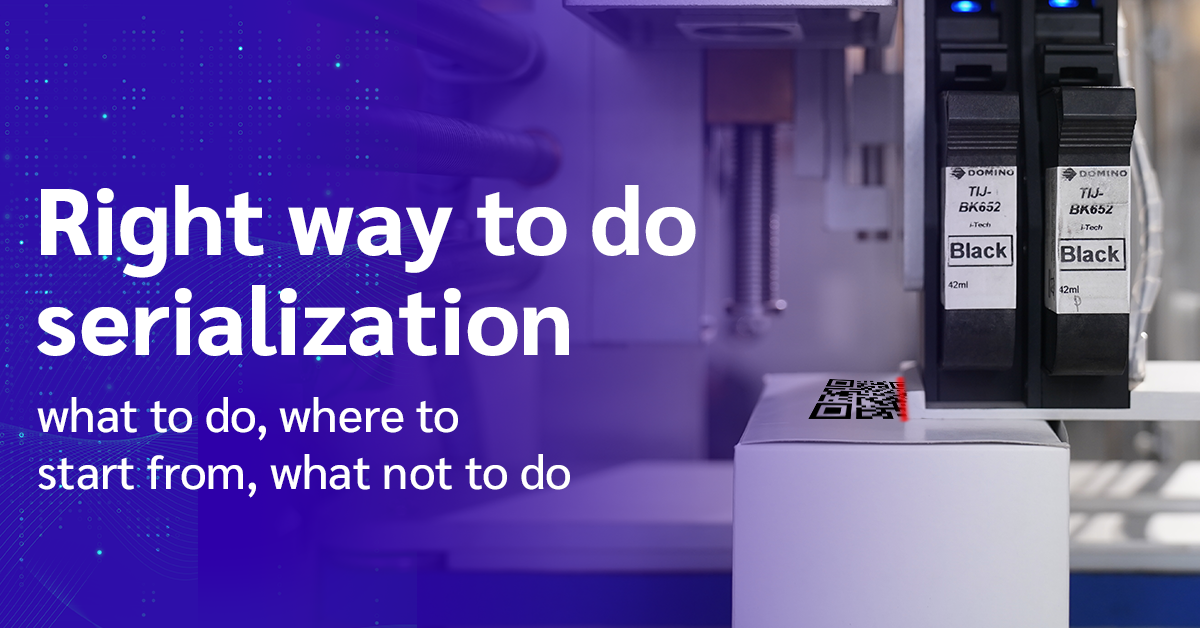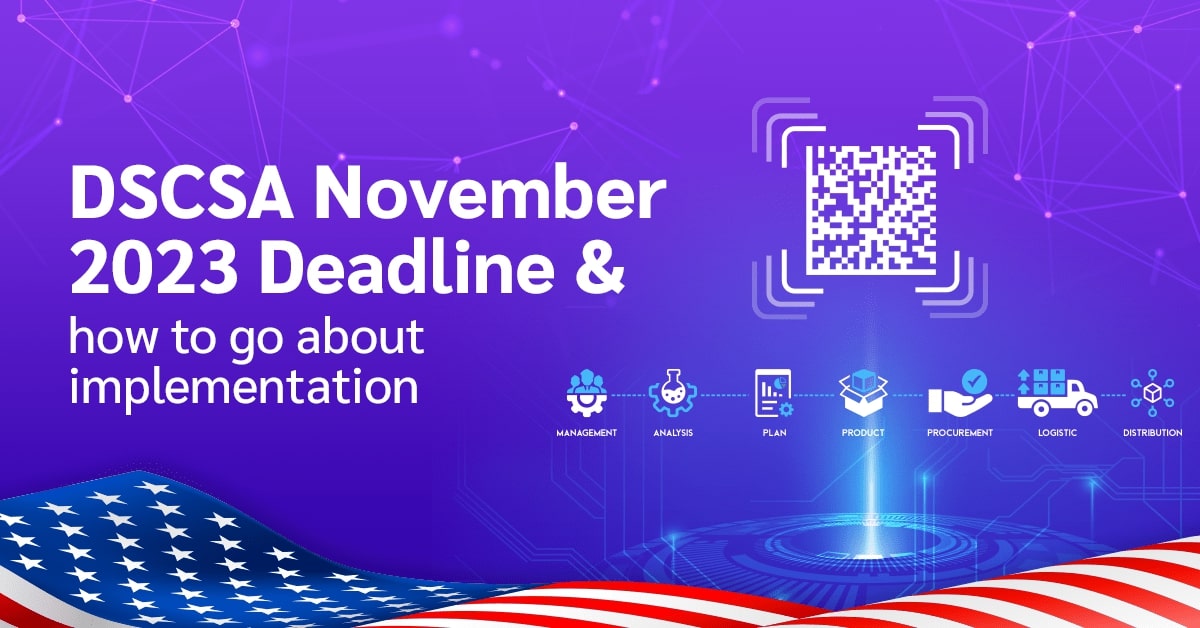Serialization is a key technology in modern data management and communication, particularly in industries requiring high levels of traceability and security, such as the pharmaceutical, food, and agrochemical industries, etc.
Understanding the right way to approach serialization is vital for businesses looking to ensure compliance, enhance security, and improve supply chain visibility.
We have written this article to provide you with information on understanding the fundamentals of serialization, starting points, best practices, and common pitfalls to avoid.
What is Serialization?
At its core, the serialization feature is a unique code-generation algorithm that can be assigned to individual sellable items.
This feature allows for easy integration and installation on packaging lines and offers unique control for printing and checking.
This process is important for creating unique identifiers for individual items, enabling tracking from production through to the end-user, ensuring authenticity, and combating counterfeiting.
Starting Points for Implementing Serialization
Implementing serialization effectively begins with understanding the specific needs of your industry and the regulatory requirements it must comply with.
For industries like pharmaceutical and food, where tracking and tracing products are essential for compliance and security, starting with a robust system designed for easy integration is key.
The initial steps involve:
- Choosing the Right Serialization Solution: Look for solutions that offer unique code generation algorithms capable of assigning distinct identifiers to each sellable item. This specificity is crucial for ensuring that each product can be individually tracked through its supply chain journey.
- Integration with Existing Systems: Opt for serialization solutions that promise easy integration with your current packaging lines. This minimizes disruption to your operations and ensures a smoother implementation process.
- Scalability and Flexibility: Ensure that the solution you choose can scale with your business and adapt to future changes in regulations or product lines.
Best Practices in Serialization
When implementing serialization, several best practices can ensure success:
- Unique Control for Printing and Checking: Advanced serialization solutions, like those offered by Jekson Vision, provide unique control over the printing and checking of serialized codes. This ensures high accuracy in code assignment and minimizes the risk of duplication or errors.
- Comprehensive Training: Training your staff on the new system is important for ensuring that they understand how to operate it effectively and recognize the importance of maintaining serialization integrity.
- Regular Testing and Audits: Regularly testing the serialization system and conducting audits can help identify potential issues before they become significant problems, ensuring the system remains reliable and compliant.
Common Pitfalls to Avoid
While serialization offers numerous benefits, there are common pitfalls that businesses should be aware of:
- Overlooking Regulatory Requirements: Failing to fully understand or comply with industry-specific regulatory requirements can lead to significant legal and financial repercussions.
- Underestimating the Importance of Data Security: Serialization involves handling sensitive data. It’s essential to ensure that your serialization solution includes robust security measures to protect this data from unauthorized access or breaches.
- Neglecting System Maintenance: Like any technology, serialization systems require regular maintenance to function optimally. Neglecting this can lead to system failures and operational disruptions.
Conclusion: Enhancing Security and Compliance with Jekson Vision
For businesses in the pharmaceutical, agrochemical industries, FMCG, and beyond, embracing serialization is about securing the supply chain, enhancing product integrity, and building trust with consumers.
Jekson Vision’s serialization, aggregation, and track and trace solutions stand out for their ease of integration, unique control over printing and checking, and their proprietary code generation algorithm.
As you consider implementing or upgrading your serialization system, remember the importance of starting with a clear understanding of your needs, following best practices, and avoiding common pitfalls.
With the right approach and technology, serialization can be a powerful tool in your business’s arsenal for security and compliance.
Discover how our unique code generation algorithm and easy-to-integrate systems can transform your product tracking and tracing capabilities. Visit Jekson Vision today to learn more and take the first step toward a more secure and compliant future.






